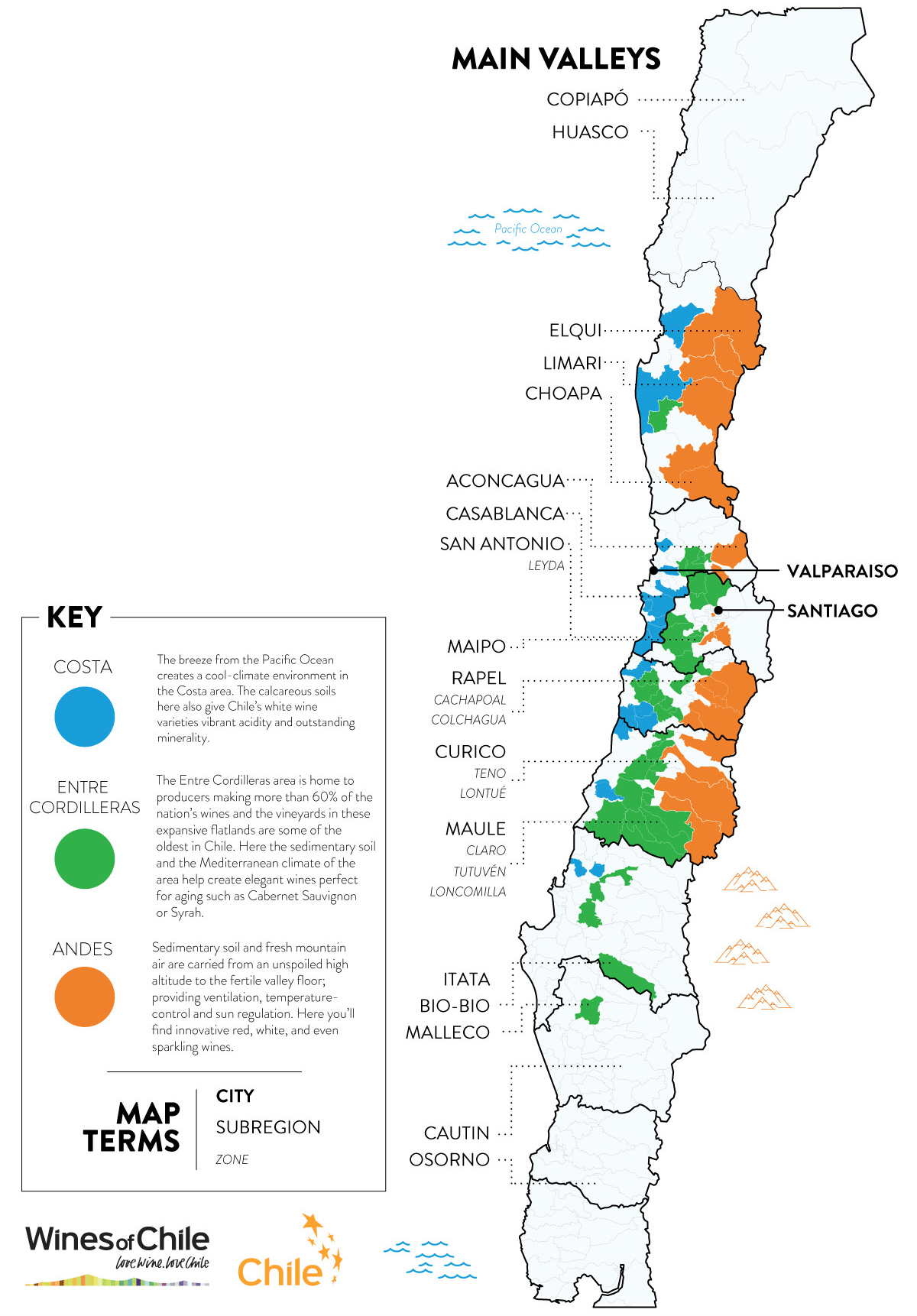PLACE
Viticultural paradise.
It is almost a cliché to suggest that Chile is a viticultural paradise but with natural barriers and protection in the form of deserts, mountains and oceans, it really is one of the most exciting places in the world to make wine.
LOCATION
Covering 756,096 square kilometres (291,930 sq mi), Chile is the southernmost country in the world, the closest to Antartica, and borders Peru to the north, Bolivia, to the northeast and Argentina. It occupies a long, narrow strip of land between the magnificent Andes mountains to the east and the South Pacific ocean to the west.
With the Atacama Desert to the north, the Andes Mountains to the east, the Patagonian ice fields to the south, and the Pacific Ocean to the west, these natural geographic barriers make Chile the perfect location for growing agricultural produce.
The diverse wine regions are crammed in to a country from north to south that extends 4,270 km (2,653 mi), and yet it only averages 177 km (110 mi) east to west.
There are distinct climate zones: There are COSTA (coastal) zones, ANDES zones, and ENTRE CORDILLERA (between mountains) zones.
CLIMATE
Chile’s climate features the warm, dry summers and cold, rainy winters that vines love. It is is highly influenced by the cooling effect of the Pacific Ocean and specifically the
Humboldt Current flowing northwards from Antarctica up the western coast of South America. If it wasn’t for this current, cool ocean breezes would not penetrate inwards through the various river systems that traverse the sub-regional valleys and Coastal mountains.
Clouds and mists form, but little or no precipitation, which then contributes to making the Atacama Desert the driest on Earth! Together these climatic characteristics maintain healthy conditions and protect vineyards against pests and disease.
The growing season revels in bright sunny days and temperatures that take a dramatic dip each night to create the broad daily temperature oscillation that wine grapes need to develop fresh fruit flavours, crisp acidity, and in the case of red wines, ripe tannins, deep colour, and high levels of antioxidants and flavonols.




